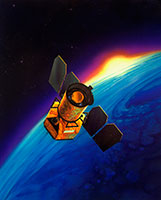| |
| |
| Ivan Baldry | | Liverpool John Moores University |
| Steven Bamford | | University of Nottingham |
| Simon Driver | | University of St. Andrews |
| Loretta Dunne | | University of Nottingham |
| Steve Eales | | Cardiff University |
| Brad Gibson | | University of Central Lancashire |
| Andrew Hopkins | | Anglo-Australian Observatory |
| Jochen Liske | | ESO |
| Jon Loveday | | University of Sussex |
| Barry Madore | | Carnegie Institution of Washington |
| Peder Norberg | | University of Edinburgh |
| John Peacock | | University of Edinburgh |
| Cristina C. Popescu | PI | University of Central Lancashire |
| Mark Seibert | | Carnegie Institution of Washington |
| Richard J. Tuffs | PI | MPIK |
| Dinuka Wijesinghe | | University of Sydney |

